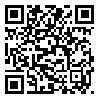Volume 23, Issue 82 (summer 2018)
__Judicial Law Views __2012__, 23(__59__): __22482 |
Back to browse issues page
Download citation:
BibTeX | RIS | EndNote | Medlars | ProCite | Reference Manager | RefWorks
Send citation to:



BibTeX | RIS | EndNote | Medlars | ProCite | Reference Manager | RefWorks
Send citation to:
Jalali M. Assessing Preventive Self-defense in Fighting Terrorism. دیدگاههای حقوقی 2018; 23 (82) :53-82
URL: http://jlviews2.ujsas.ac.ir/article-1-1087-en.html
URL: http://jlviews2.ujsas.ac.ir/article-1-1087-en.html
1- Isfahan Un. Faculty of Law , m.jalali@ase.ui.ac.ir
Abstract: (3867 Views)
Abstract
Scholars rightly believe that prohibiting the threat to or use of force is the most important achievement of the UN charter. Eventhough Article 51 offers an exception in this regard, the letters and substance of this article are clear about an ‘armed attack’ as a precondition to trigger the right to self-defense. Beside this legal fact, a Preemptive use of force against an imminent threat is endorsed by Customary International Law as well. However, and mainly after the 9/11, a number of countries have used military forces against their oppositions beyond their borders under the article 51 while labeling those groups as terrorist organizations. Supporting this approach, some scholars have argued that an ''extensive interpretation'' of Article 51 could enable states to legally fight terrorist threats beyond their territories under ''Preventive Self-defense.
Having thoroughly examined theories & concepts of interpretation, UN and ICJ Jurisprudence, we have argued that none of those sources supports the `Extensive Interpretation` doctrine under the treaty law or customary international law. Reiterating the necessity to offer a well-defined legal mechanism to prevent terroristic threats, we believe the International law may not yet provide a proper answer to this question through ''codification'', and the answer lies in the ''development'' of international law. To this end, the author proposes a triangle criteria test toward a legal use of force against non-imminent terrorist threats beyond national borders.
Having thoroughly examined theories & concepts of interpretation, UN and ICJ Jurisprudence, we have argued that none of those sources supports the `Extensive Interpretation` doctrine under the treaty law or customary international law. Reiterating the necessity to offer a well-defined legal mechanism to prevent terroristic threats, we believe the International law may not yet provide a proper answer to this question through ''codification'', and the answer lies in the ''development'' of international law. To this end, the author proposes a triangle criteria test toward a legal use of force against non-imminent terrorist threats beyond national borders.
Type of Study: Applicable Research |
Received: 2017/10/20 | Revised: 2019/01/27 | Accepted: 2018/06/14 | Published: 2018/12/31 | ePublished: 2018/12/31
Received: 2017/10/20 | Revised: 2019/01/27 | Accepted: 2018/06/14 | Published: 2018/12/31 | ePublished: 2018/12/31
Send email to the article author
| Rights and permissions | |
 |
This work is licensed under a Creative Commons Attribution-NonCommercial 4.0 International License. |

